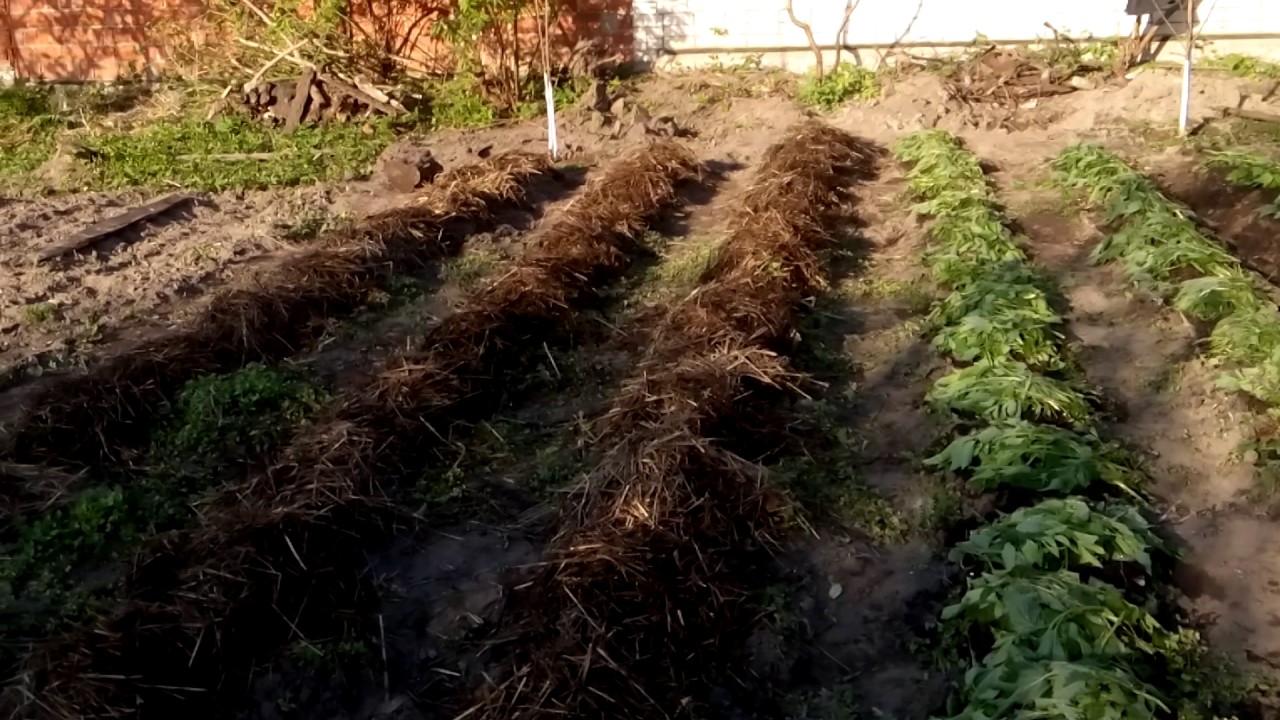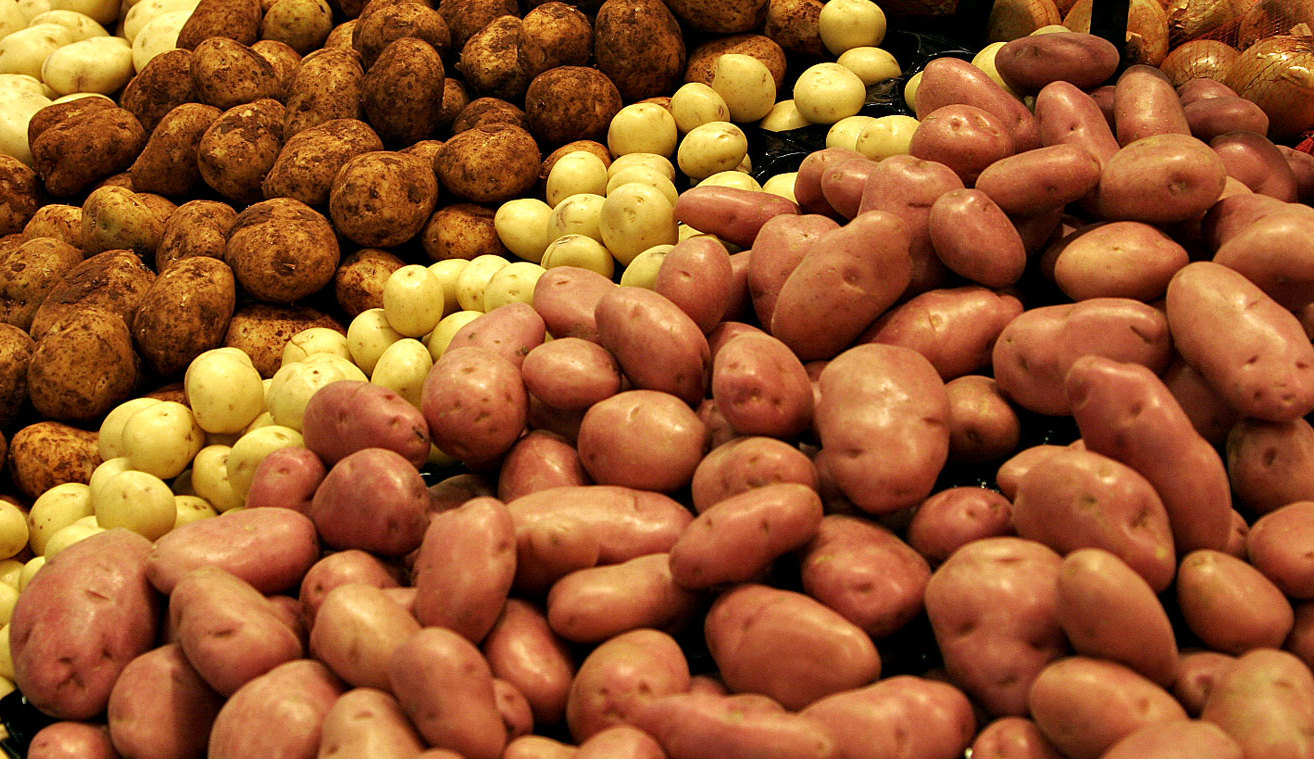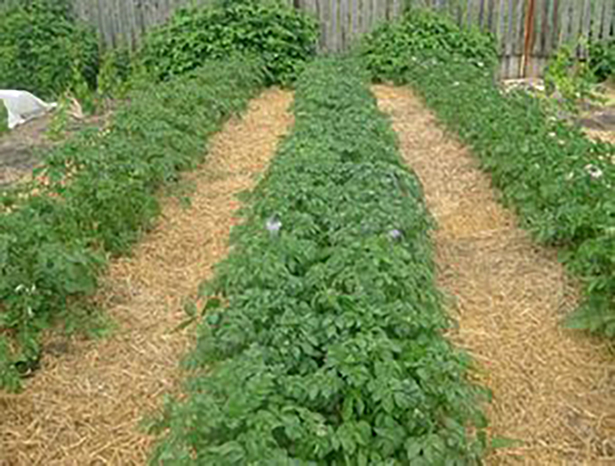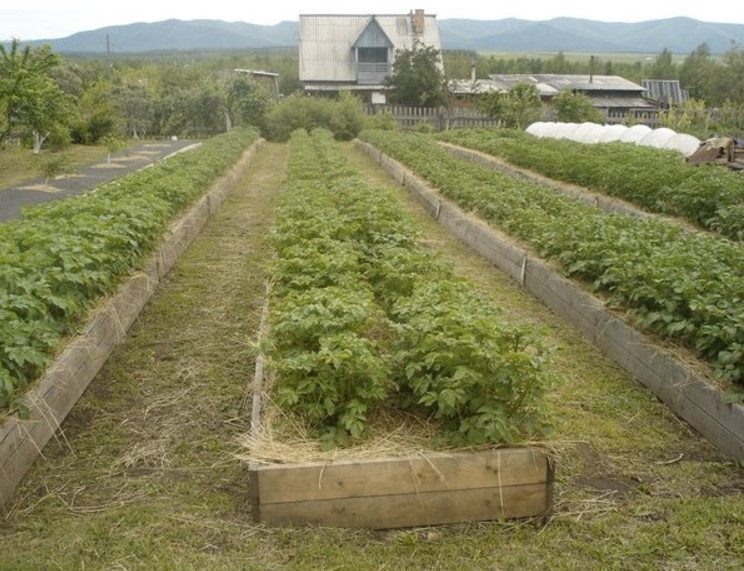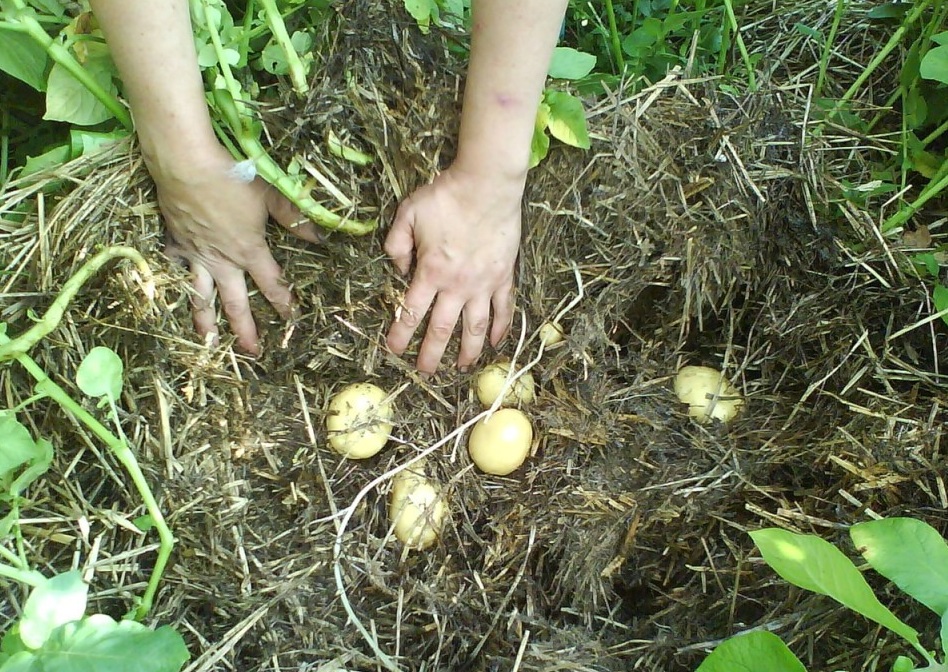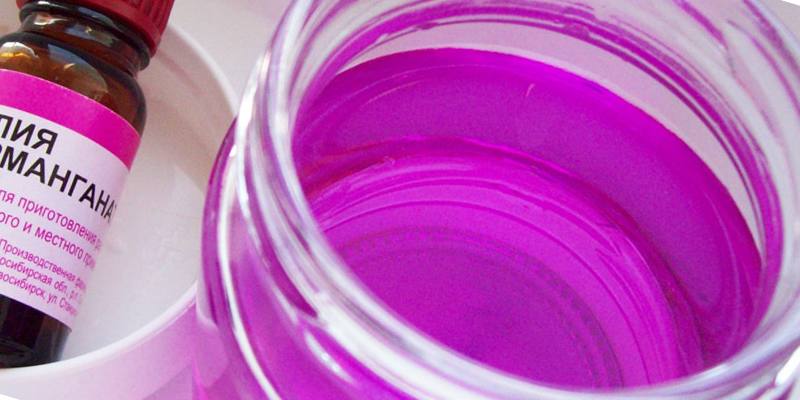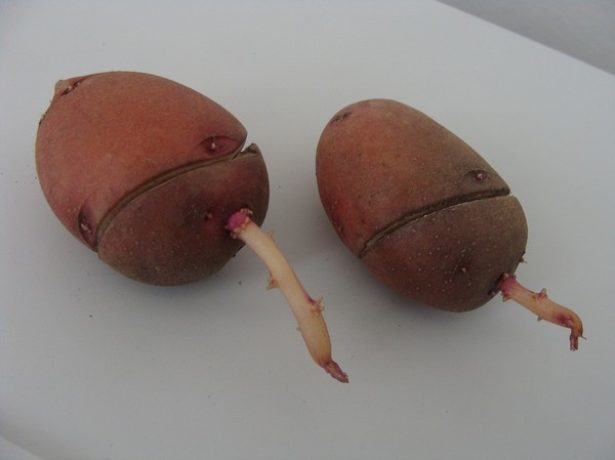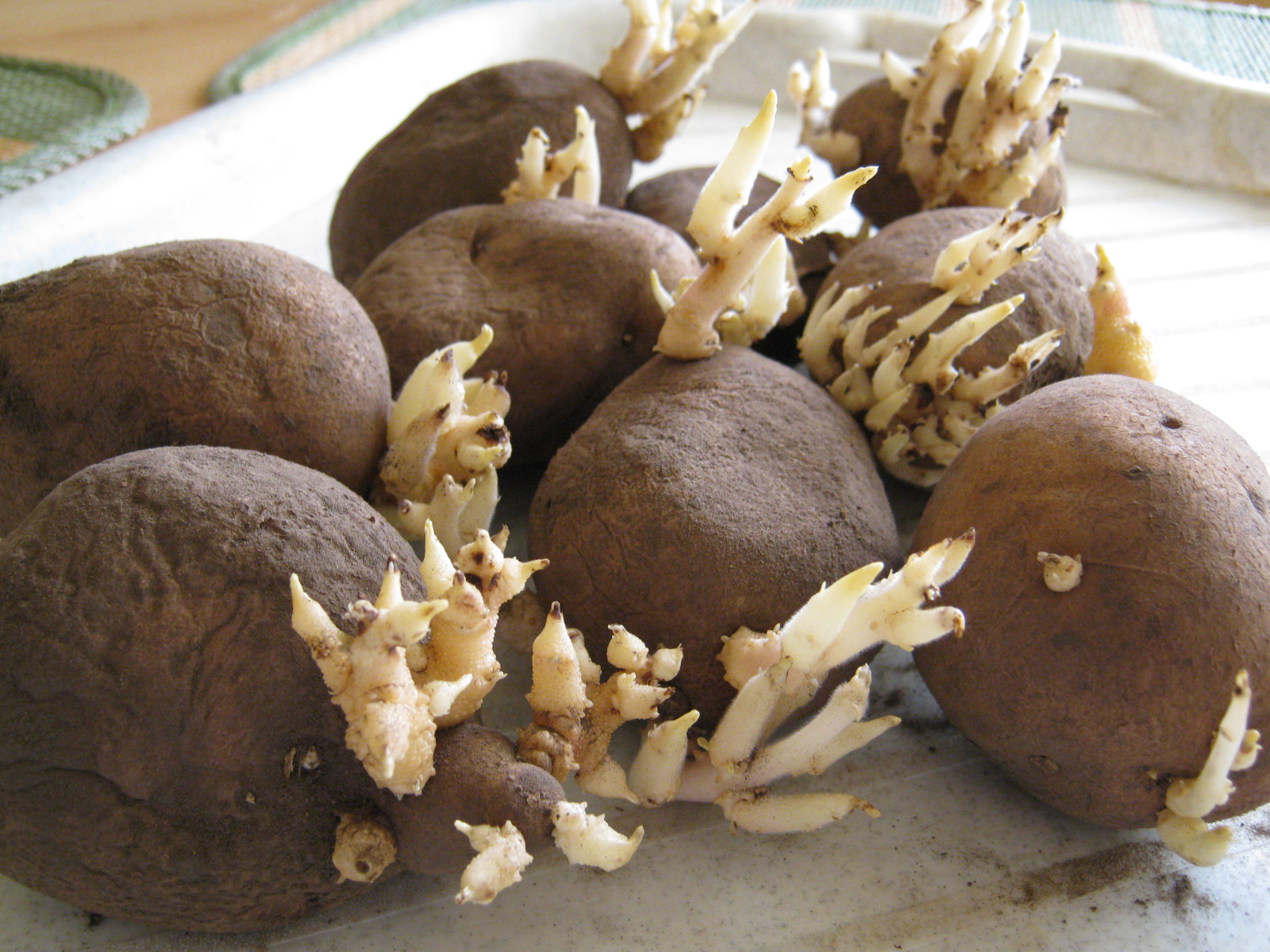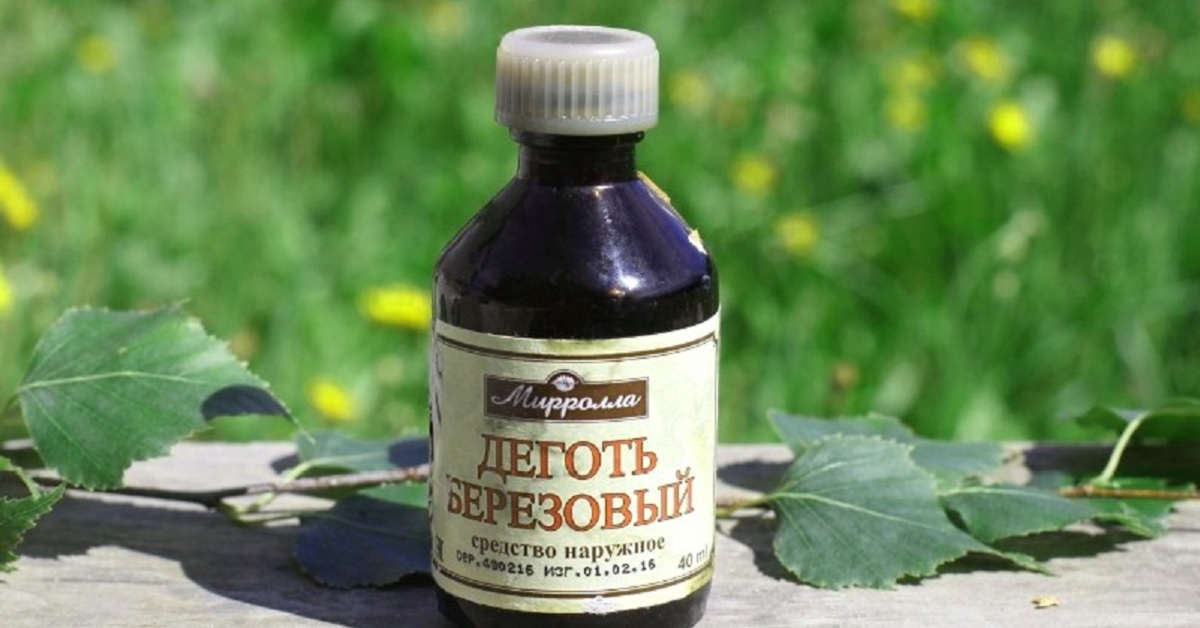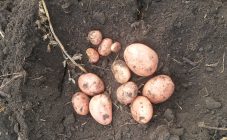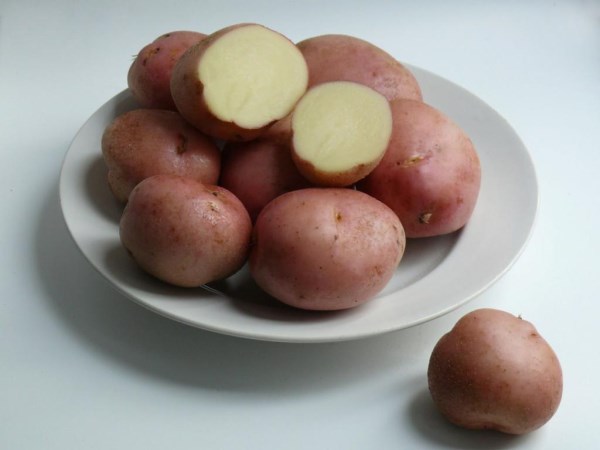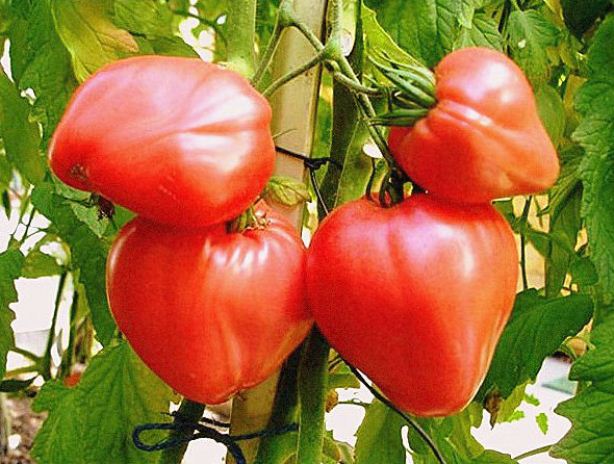Content:
Many are accustomed to planting potatoes in prepared, dug soil. However, there is an effective way when planting a crop takes place without the usual digging of the earth. It's about organic farming. Among its principles is the rejection of deep plowing of the soil, due to a decrease in its fertility. To figure out how to plant potatoes without digging the land, you need to know basic information about the culture and existing planting methods on virgin soil.
Basic information about potatoes
The potato is a tuberous plant belonging to the Solanaceae family. The culture is known all over the world. Its tubers are considered an important product. They can be baked, fried, boiled. Potatoes are added to a wide variety of dishes.
The plant consists of ground and underground parts. Erect or semi-erect stems are located above the ground, forming a bush. Their height, depending on the variety, ranges from 0.4 to 1.5 m. The average number of stems is from 5 to 10. The color is emerald. The leaves are slightly darker. They have short petioles. Flowers usually bloom at the very tops of the stems. Their color is white, light pink, purple, cornflower blue. After flowering, light green berries appear. They resemble cherry tomatoes in shape. The berries are poisonous.
The underground part of the bush is the root system, stolons (shoots). They grow in different directions. Tubers develop on the stolons. The tubers are round, oval. There are eyes on the peel. They contain the kidneys. A new potato bush grows from the buds. Reproduction is possible by seeds, tubers or parts thereof. The peculiarity of potatoes is that their tubers are formed on stolons, and not on the root. Therefore, potatoes do not need to be planted in the ground. This principle is the basis for organic farming.
Tuber color depends on the variety. There are varieties of the following colors:
- Yellow;
- Red;
- Purple;
- White;
- Brick.
Planting methods without digging the land
There are several methods of growing potatoes on virgin soil. They all have their own characteristics and subtleties.
Vladimir Kartelev's methods
Vladimir Kartelev is a scientist, agronomist, soil scientist. He is the author of a unique technique for growing potatoes and other vegetables without tillage. According to the agronomist, the harvest exceeds all expectations, despite any weather. The main attribute of plantings is mown grass. The herb is an organic fertilizer. Planting potatoes using the Kartelev method involves using grass as mulch.
Grass harvesting takes place in several stages. First they mow her down, then leave her outside for several days. Piles are formed from it, which should dry out. Then everything is removed to the woodshed. Before winter, the grass is laid out on the site. It is allowed to use hay. Straw will do, too.
Vladimir Kartelev has developed six methods for planting potatoes. Ideally, they should be alternated.
Method number 1
The site does not need to be dug. It should be freed from weeds. Measure even rows, the distance between which is 0.6-0.7 m. Make elongated grooves on these rows using a hoe. Planting material is placed every 0.3 m. Beans are placed between the tubers. Everything is sprinkled with fly ash, abundant humus. The depressions are covered with earth. Several times per season it is necessary to hilling the site.
Method number 2
It is not necessary to dig the entire plot, only 30% of the area. Weeds are removed. The rows are formed from even depressions. Further, organic matter, for example, manure, is placed in the hollows. It is covered with soil. Tubers and beans are placed on the ground. Everything is covered with ash. Another necessary element is humus. Put the earth on top. When the bushes grow, hilling planting is necessary.
Method number 3
The plot does not need plowing. The prepared grass is laid on it. Layer height - 0.2 m. Mulch is covered with soil. Again, even rows are measured, the distance between which is 0.6-0.7 m. Depressions are made in the soil with mulch with a sharp object. Planting material is placed in them. Potatoes are alternated with beans. Next, humus, fly ash, and ordinary garden soil are placed on them. In the future, hilling is necessary.
Method number 4
This technique duplicates method # 1. Only after planting is completed, mulching of the site is performed. Grass, straw, hay will do. It is necessary that the height of the mulch is at least 15 cm.
Method number 5
The agronomist proposes to divide the site into sectors. Apply one of the proposed methods No. 2, 3, 4 to each sector.
Method number 6
It duplicates method # 2. The only difference is that an abundant layer of grass is applied to the entire planting area.
Igor Lyadov's method
Igor Lyadov is an amateur vegetable grower who became popular after he came up with an unusual but successful method for planting vegetable crops.
Planting potatoes according to the method of Igor Lyadov takes place in durable closed beds. These are a kind of containers, boxes of soil. They settle down from north to south. You can make them from wooden sticks, boards, bricks. Average height - 0.2 m. Width - about 1.1 m. Straw, grass, hay, dry foliage are laid out at the bottom, you can use paper. All this is covered with compost, earth that can be taken from the aisles. Thus, the beds are filled and the aisles are cleared. Then in the aisles you can put cut grass, dry weeds, sawdust. You will get a kind of clean paths on which weeds will not grow.
When planting potatoes, deep plowing is not needed. At the bottom of the bed there is organic matter, it cannot be touched. You just need to loosen the soil. Next, holes are made at a distance of 0.3-0.4 m. Two even rows are placed at the edges of the container. The disembarkation takes place in a checkerboard pattern. Ash, crushed egg shells are placed on the planting material. Further, the hole is closed with earth.
After small bushes appear on the garden bed, it needs to be weeded and mulched. Straw and leaves are placed between the bushes.
Gordeev's method
Growing potatoes using the Gordeevs technology provides for the preparation of the site in the fall. It is dug up with compost. You can take rotted manure. This organic matter is allowed not to be used if the plot was covered with hay in summer, along with which plowing is carried out in the autumn months.
When spring comes, nitroammofoska is applied to the ground, after which it is loosened with a rake. There is no need to dig up the site.
A few weeks before planting potatoes without digging the earth, planting material is prepared. Large, healthy potatoes with sprouts are selected for planting. It unfolds in a room, where it is about + 7 ... + 10 degrees. It is covered with a cloth, since the potatoes can turn green in the light. After germination, it is allowed to cut large tubers. After a few days, their sections should heal. After that, the material is sprayed with a special agent that can be bought at the store.
If the spring is dry, then the virgin land is watered. Further, rows are marked at a distance of 0.7-0.8 m. Trenches are dug. The bottom of each is sprinkled with nitroammophoska granules, they are mixed with the ground.
Tubers are laid out at a distance of 0.2-0.3 m from each other. Sprinkle with wood ash and compost. A layer of earth is laid out on top. During the summer, the site must be earthed, watered weekly. It is recommended to cover the soil with hay after hilling.
Planting potatoes without digging the earth
Another planting method is to spread the potatoes directly onto the turf. After the seed is covered with a generous layer of mulch. This method is called natural. Due to the fact that tubers do not grow on the root, but on stolons, the culture can not be planted in the ground. The main thing is to provide it with all the necessary nutrients. Such substances can be obtained from the topsoil, organic mulch, complex fertilizers.
Planting potatoes in the grass
Planting potatoes without plowing is much easier and faster. But you need to stock up on a large amount of mulch, which can be grass, straw, hay. On an untreated area where grass grows, even rows are marked, this can be done with stakes and ropes. The distance between the rows is 0.5-0.6 m. Several tubers are laid out in the marked rows every 0.2-0.3 m. The potato will grow better if the planting material is spread out in a checkerboard pattern.
The tubers are covered with a layer of mulch of 0.2-0.3 m. During the summer, all the collected weeds are poured onto the potato plot, the mulch is renewed. Slop is poured into the places located between the rows.
How to grow potatoes vertically
The vertical method of growing potatoes is one of the newest. Thanks to the vertical method, potatoes can be grown not only in the garden, but also on the balcony. The vertical planting method is ideal for very small vegetable gardens.
Planting potatoes in a grid
This method requires a welded galvanized mesh. A cylinder is made from it. Diameter - 70-80 cm. Height - about 1.2 m. For stability, slats are hammered along the width of the cylinder. These stakes will keep the cylinder from falling. Then the cylinder is filled. First, a 20-centimeter layer of humus with the ground is placed, potatoes are laid on it, about 5-7 tubers. Mulch in the form of straw is laid around the perimeter of the net. Due to the straw, moisture evaporation will be minimal. Next, humus is again laid out with the ground, potatoes on it, a layer of mulch around the perimeter. Thus, the cylinder is filled to the very top. Everything is well watered. The nets must be watered several times a week during the summer period.
Landing on virgin soil
This technique is based on not digging up the ground, not removing weeds, or watering. The grass is mowed on virgin soil. Throughout the site, mulch is laid in the form of hay, grass, straw.
The planting material is arranged in even rows in a checkerboard pattern. The recommended distance between tubers is 30 cm. Between rows is 50 cm.A layer of straw is placed on the planting material, and a little garden soil is placed on it so that the straw is not blown away by the wind. Row spacing can be sprinkled with bark, sawdust. After the potato stalks have extended 15 cm, a new layer of mulch is placed next to them. During the season, you need to report to the area of straw or grass 2 times. According to reviews, the harvest when planting on virgin soil turns out to be decent. Planting and harvesting potatoes is easy with this method. But it is better not to use virgin landings for large areas.
Planting material processing
Despite the simplicity of the method, gardeners should pay special attention to preparing potatoes for planting. Tubers can only be planted with strong shoots. Otherwise, there will be no harvest. March is suitable to start working with seed. From March to May, the potatoes will sprout and be ready for planting. First, the planting material is selected. The tubers should be healthy, not too large. They are washed. Placed in hot water, the temperature of which is about 40 degrees. After the water has cooled down, it is slightly tinted with potassium permanganate. Manganese is essential for disinfection. After 15 minutes, the tubers are removed and blotted with a towel.
What is kerbovka
Kerbovka - a technique for cutting planting material. It is necessary to stimulate an even distribution of nutrition throughout the tuber. It is known that the tuber is a mini-stem that is very thickened. Real buds are hidden in the eyes of the potatoes. Shoots develop from the buds. However, not all kidneys get the right amount of nutrients. The upper kidneys receive the most nutrition. Accordingly, it is from them that the stems will come out. The lower eyes are usually dormant. They receive small amounts of nutrients through the peel. To change the situation, to awaken the lower kidneys, kerbovka is necessary.
What is the annular cut for?
Kerbovka potatoes is a rather laborious process. It takes a lot of time to cut the skin over each eye of the planting material. You can get away from this by making an annular cut. What is the annular cut for? It is also performed to deliver food to sleeping eyes. This is the same kerbovka, only less laborious. An annular cut is made in the middle of the tuber to a depth of about 0.8 cm. However, it is not continuous. A few places are left untouched so that nutrients can reach the upper kidneys. Kerbovka and banding are performed before vernalization.
Is it possible to plant green potatoes
Before sprouting potatoes, it needs vernalization. This process consists in greening the planting material. There is a lot of solanine in green potatoes. It is a poison that will protect tubers from diseases, insects and common field rodents.
The duration of vernalization is about three weeks. Tubers are placed on newspapers in a place where it is cool enough (about +2 degrees), but not dark. The potatoes should turn green in 25 days. It will develop a green pigment. The answer to the question "is it possible to plant green potatoes?" unambiguous. Before planting potatoes without digging the earth, the tubers must be green.
After vernalization, germination of tubers begins. For this, a mesh or box is taken. Planting material is placed there. Then the potatoes are harvested for 7-10 days in a dark place.The temperature there should be about +15 degrees.
Onion infusion and birch tar
Before planting potatoes directly, it is necessary to carry out disease prevention. Onion infusion is suitable for this. It's easy to cook. One or several onions are peeled. The husk is finely crumbled. One glass of husk takes 8-10 liters of water. The water should boil. The infusion is left for 5-7 hours. After this time, he is ready. Potatoes are placed in the onion infusion before planting. This remedy is used as a preventive measure against diseases.
Treating potatoes with tar before planting will help protect the plant from pests. Take a bucket of water and a fly in the ointment. Everything gets mixed up. Potatoes are treated with the solution, and it is also poured into the planting site.
Folk signs
To the question "when to plant potatoes according to folk signs?" there can be many answers. You can see the folk calendar, which contains various forecasts and phenomena, including agrarian ones. However, the most common sign is birch. As soon as the leaves of the tree reach the size of a ruble, you can start planting. According to agronomists, such a sign was not formed from scratch. By the time the birch leaf reaches a size of 1-2 cm, the ground warms up to + 8 ... + 10 degrees.
Planting potatoes without digging the earth has many advantages, including not only simplicity, but also a beneficial effect on the soil. It has been found that organic farming increases natural fertility.
